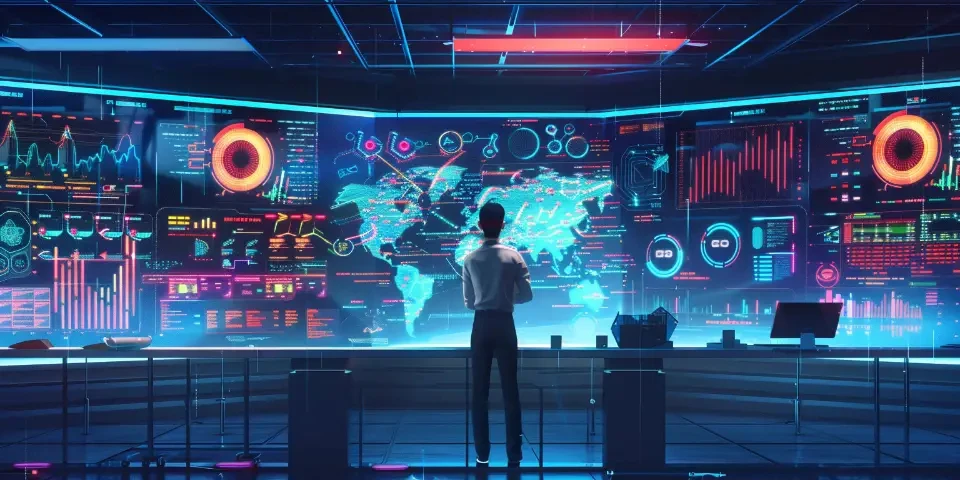Virtual Try-On How AI-powered Webcams are Transforming the E-commerce Experience
Virtual try-on technology, powered by AI and webcams, is revolutionizing the e-commerce experience. This cutting-edge technology allows consumers to virtually try on products such as clothing, accessories, and even makeup, without the need to visit a physical store. By providing an interactive and immersive shopping experience, virtual try-on is reshaping the way consumers shop online. In this article, we will explore the various aspects of virtual try-on and its impact on the e-commerce industry.
1. Enhanced Shopping Experience
Virtual try-on provides an enhanced shopping experience by enabling customers to visualize how a product will look on them before making a purchase. With the help of AI algorithms, a webcam captures and analyses the user's facial features and body measurements, allowing them to virtually try on clothing items and accessories in real-time. This technology eliminates the guesswork and uncertainty associated with online shopping and enhances customer confidence in their purchase decisions.

Moreover, virtual try-on also allows for personalized recommendations based on the user's body type, style preferences, and previous purchases. AI algorithms can suggest similar or complementary products, leading to increased customer satisfaction and higher conversion rates.
2. Cost and Time Savings
Virtual try-on eliminates the need for customers to physically visit stores, saving them valuable time and transportation costs. Customers can try on various products from the comfort of their homes, reducing the hassle of browsing through crowded stores or waiting in long queues for fitting rooms. Additionally, virtual try-on technology also reduces the cost and effort involved in managing a physical product inventory, as e-commerce retailers can provide a wider range of options without the need for physical storage.
3. Accurate Sizing and Fit
One of the major challenges in online shopping is determining the correct sizing and fit of a product. Virtual try-on solves this problem by accurately measuring the user's body proportions using AI-powered algorithms. By comparing these measurements with the product's specifications, virtual try-on technology can provide accurate size recommendations, leading to reduced return rates and customer dissatisfaction.
Furthermore, virtual try-on can simulate how a garment or accessory moves and fits on the user's body, helping them make a more informed purchasing decision. This level of accuracy and detail enhances the overall shopping experience and builds trust between the customer and the e-commerce retailer.
4. Increased Product Engagement
Virtual try-on technology significantly increases product engagement and interactivity. Customers can rotate, zoom in, and explore the product from different angles, allowing them to examine its details, texture, and overall quality. This level of interactivity fosters a deeper connection between the customer and the product, mimicking the in-store shopping experience and increasing the likelihood of a purchase.
In addition, virtual try-on technology can also incorporate augmented reality (AR) features, such as virtual backgrounds, filters, and effects, to provide a more immersive and fun shopping experience. This gamification of the e-commerce process enhances customer engagement and encourages repeat visits to the retailer's website.
5. Influencer Marketing and Social Sharing
Virtual try-on technology opens up new opportunities for influencer marketing and social sharing. Influencers can showcase products using virtual try-on technology, allowing their followers to virtually try on the same products. This creates a more personalized and relatable shopping experience, leading to increased brand loyalty and sales.
Furthermore, customers can share their virtual try-on experiences on social media platforms, allowing them to seek opinions from their peers, receive feedback, and generate buzz around a particular product or brand. This word-of-mouth marketing can significantly impact the visibility and reputation of e-commerce retailers.
Frequently Asked Questions (FAQ)
Q: Are virtual try-on experiences limited to clothing and accessories only?
A: No, virtual try-on experiences can extend to various other products, including eyewear, cosmetics, and even furniture. The technology can virtually simulate how these products will look and fit on the user, providing a comprehensive and immersive shopping experience.
Q: Do I need to download any specific software to use virtual try-on technology?
A: In most cases, virtual try-on experiences can be accessed directly through the retailer's website or mobile application. No additional software downloads are required.
Q: How accurate are virtual try-on simulations?
A: Virtual try-on simulations are highly accurate, thanks to AI-powered algorithms that analyze facial features, body measurements, and movement. These simulations provide users with a realistic representation of how a product will look and fit on them.
References
1. Smith, J. (2020). The Future of Virtual Try-On Technology in E-Commerce./future-virtual-try-on
2. White, K. (2019). How Virtual Try-On Will Disrupt the E-Commerce Industry./virtual-try-on-disruption
Explore your companion in WeMate